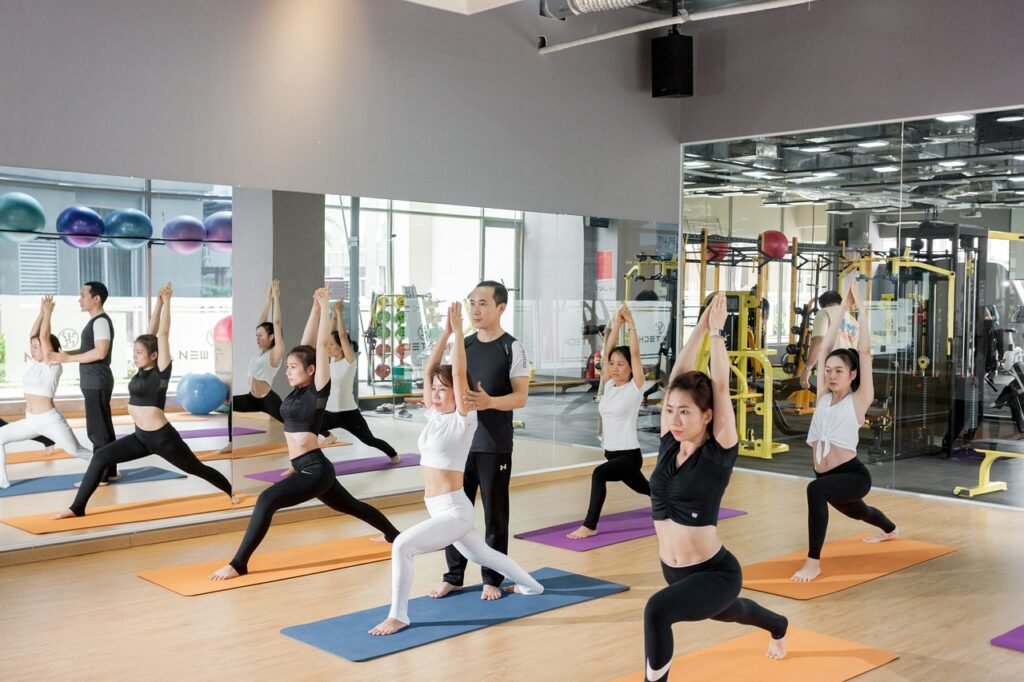
Introduction to the Practice of Yoga

Yoga is a multifaceted discipline that blends physical, mental, and spiritual practices to promote overall well-being.
Originating from ancient India, yoga has transformed into a globally celebrated practice that enhances mental clarity, physical strength, and emotional stability.
At its core, yoga aims to create harmony within the body and mind, helping practitioners achieve a sense of balance and peace.
One of the most appealing aspects of yoga is its accessibility.
People of all ages and fitness levels can engage in yoga, making it a versatile and inclusive practice.
Whether you’re looking to increase your flexibility, improve your posture, or manage stress, yoga offers something for everyone.
It’s not merely about perfecting complex poses; it’s about finding a connection with your inner self and learning to listen to your body.
The benefits of yoga are vast and varied.
Physically, it enhances flexibility, strength, and balance.
Yoga poses, or asanas, target different muscle groups and improve posture, reducing the risk of injury and alleviating chronic pain.
Mentally, yoga fosters mindfulness and concentration.
The practice of focusing on the breath and being present in each moment can significantly reduce stress and anxiety.
Spiritually, yoga provides a path to self-discovery and inner peace, encouraging a deeper connection to oneself and the world.
In addition to its physical and mental benefits, yoga promotes holistic health.
Regular practice can improve cardiovascular health, enhance respiratory function, and boost the immune system.
It’s a powerful tool for managing chronic conditions and promoting long-term wellness.
Integrating yoga into your daily routine doesn’t require much.
A few minutes of practice each day can yield significant benefits.
Whether you’re practicing in a studio, at home, or even outdoors, yoga is adaptable to various environments and schedules.
The key is to start with an open mind and a willingness to explore the practice.
As you delve deeper into yoga, you’ll find that it’s not just an exercise routine but a lifelong journey towards greater well-being and inner peace.
Creating Your Ideal Yoga Environment
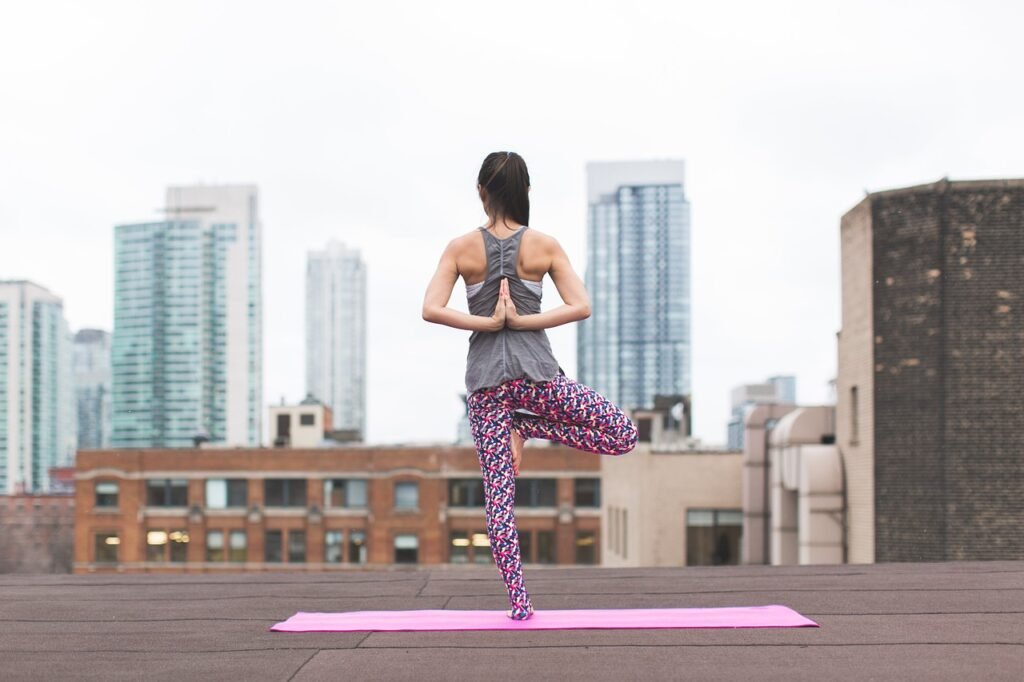
A dedicated yoga environment can significantly enhance the quality of your practice.
To start, find a quiet and spacious area where you can move freely without interruptions.
This space could be a separate room or simply a peaceful corner of your living room.
Investing in a high-quality yoga mat is essential.
A good mat provides the necessary grip and cushioning, making poses more comfortable and safe.
Along with the mat, consider incorporating props like yoga blocks and straps.
Blocks offer support in various poses, helping you maintain good posture and avoid strain.
Straps are excellent for stretching and increasing flexibility, making certain poses more accessible.
Lighting also plays a crucial role in creating the right atmosphere.
Natural light is ideal, but if that’s not possible, opt for soft, ambient lighting to create a calming environment.
Some practitioners find that adding candles or essential oils can enhance the sensory experience, promoting relaxation and focus.
Another aspect to consider is the temperature of your yoga space.
Ensure that it’s comfortably warm, as this helps to loosen muscles and make stretching easier.
If you’re practicing hot yoga, you might need a space heater to achieve the desired temperature.
Personalizing your yoga space can make it even more inviting.
Add elements that resonate with you, like inspiring artwork, plants, or a small altar with items that hold personal significance.
These touches can create a more meaningful and motivating practice environment.
Finally, keep your yoga space clean and clutter-free.
A tidy environment helps clear the mind and allows you to focus entirely on your practice.
Regularly cleaning your mat and props will also ensure they last longer and remain in good condition.
Mastering Breathing Techniques
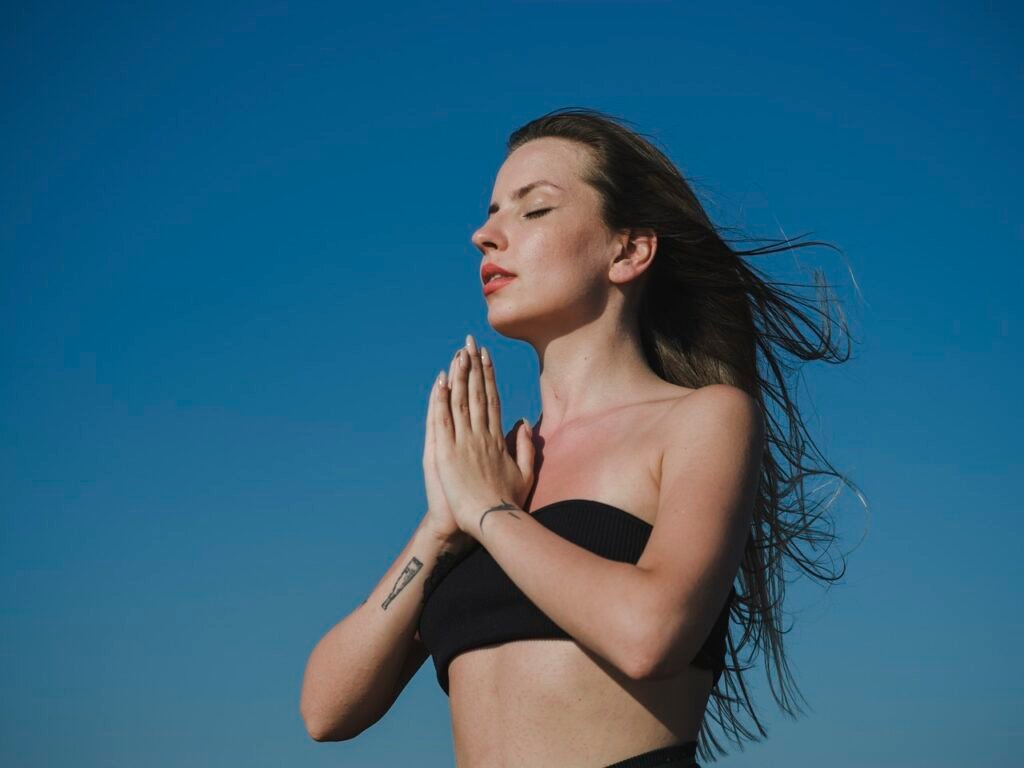
Breathing is an integral part of yoga, intertwining with each movement to cultivate a deeper sense of mindfulness and relaxation.
Pranayama, the practice of breath control, forms the backbone of this connection.
By mastering various breathing techniques, you can enhance your yoga practice and improve overall well-being.
Start with Nadi Shodhana, or alternate nostril breathing, a technique known for its calming effects.
Sit comfortably with your spine straight.
Using your right thumb, close your right nostril and inhale deeply through your left nostril.
Then, close your left nostril with your ring finger and exhale through your right nostril.
Continue this pattern for several cycles, focusing on the breath’s flow to bring a sense of calm and balance to your mind.
Another essential technique is Ujjayi, or victorious breath.
Often used during asana practice, Ujjayi involves slightly constricting the back of the throat while breathing through the nose, creating a soft ocean-like sound.
This method helps regulate the breath, maintain focus, and generate internal heat, which can be particularly beneficial during challenging poses.
Kapalabhati, or skull-shining breath, is a more vigorous technique that involves forceful exhalations and passive inhalations.
Begin by taking a deep breath in, then quickly contract your abdominal muscles to forcefully exhale through your nose.
Allow the inhalation to happen naturally.
Repeat this for a series of short, rapid breaths, gradually increasing the number as you become more comfortable.
This practice energizes the body, clears the mind, and helps expel toxins from the respiratory system.
By integrating these breathing techniques into your yoga routine, you can deepen your practice, enhance mental clarity, and promote relaxation.
Each method offers unique benefits, allowing you to tailor your breathing practice to suit your individual needs and goals.
Fundamental Yoga Positions
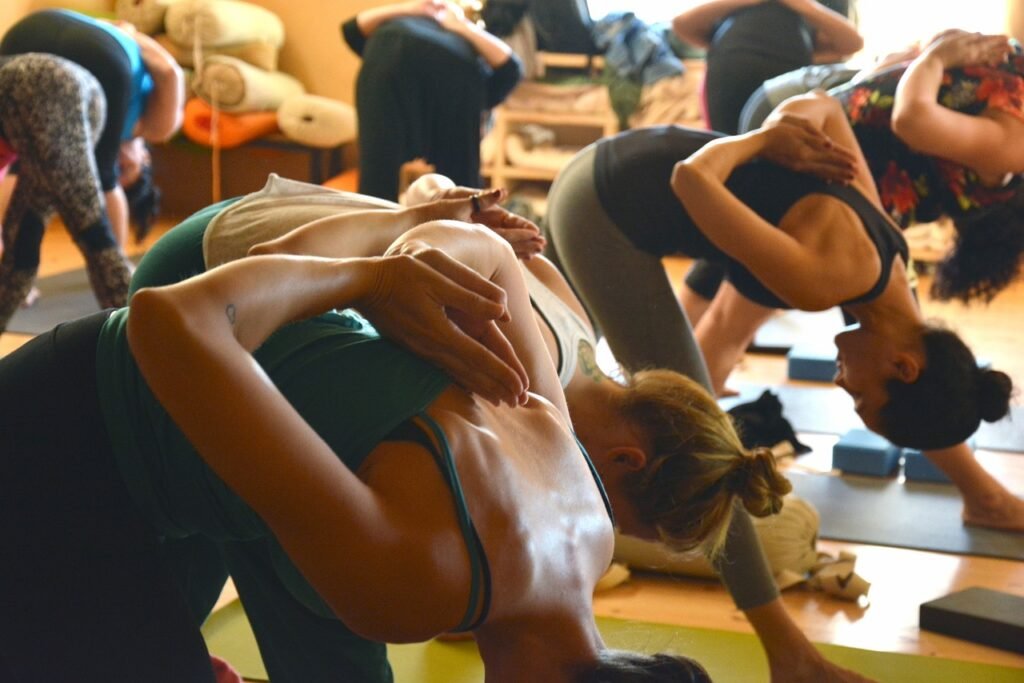
Understanding basic yoga poses is crucial for any practice.
Mountain Pose (Tadasana) is the foundation of all standing poses and encourages good posture.
Stand with your feet together, distribute your weight evenly, and lengthen your spine. This seemingly simple pose fosters balance and grounding.
Downward-Facing Dog (Adho Mukha Svanasana) is another essential pose.
Begin on your hands and knees, then lift your hips upward to form an inverted V-shape.
This pose stretches the entire body, strengthens the arms and legs, and is often used as a transitional pose in various yoga sequences.
Warrior I (Virabhadrasana I) is a powerful standing pose that builds strength and stability.
Step one foot forward into a lunge position, bend your front knee, and extend your arms overhead.
This pose opens the hips, chest, and lungs while promoting balance and focus.
Child’s Pose (Balasana) is a restorative pose perfect for resting and centering. Kneel on the floor, sit back on your heels, and stretch your arms forward while lowering your torso.
This gentle stretch relaxes the back, shoulders, and neck, making it an excellent counterpose to more intense positions.
Cat-Cow Pose (Marjaryasana-Bitilasana) is a dynamic sequence that warms up the spine.
Begin on your hands and knees. Inhale, arch your back and lift your head (Cow Pose).
Exhale, round your spine and tuck your chin to your chest (Cat Pose). This flow improves flexibility and relieves tension in the spine.
Tree Pose (Vrksasana) helps improve balance and focus.
Stand on one leg, placing the sole of your other foot on your inner thigh or calf.
Bring your hands together in front of your chest or extend them overhead. This pose enhances concentration and stability.
Finally, Seated Forward Bend (Paschimottanasana) stretches the hamstrings and spine.
Sit with your legs extended, hinge at the hips, and reach forward towards your feet. This pose calms the mind and stretches the entire back body.
Designing Your Yoga Schedule
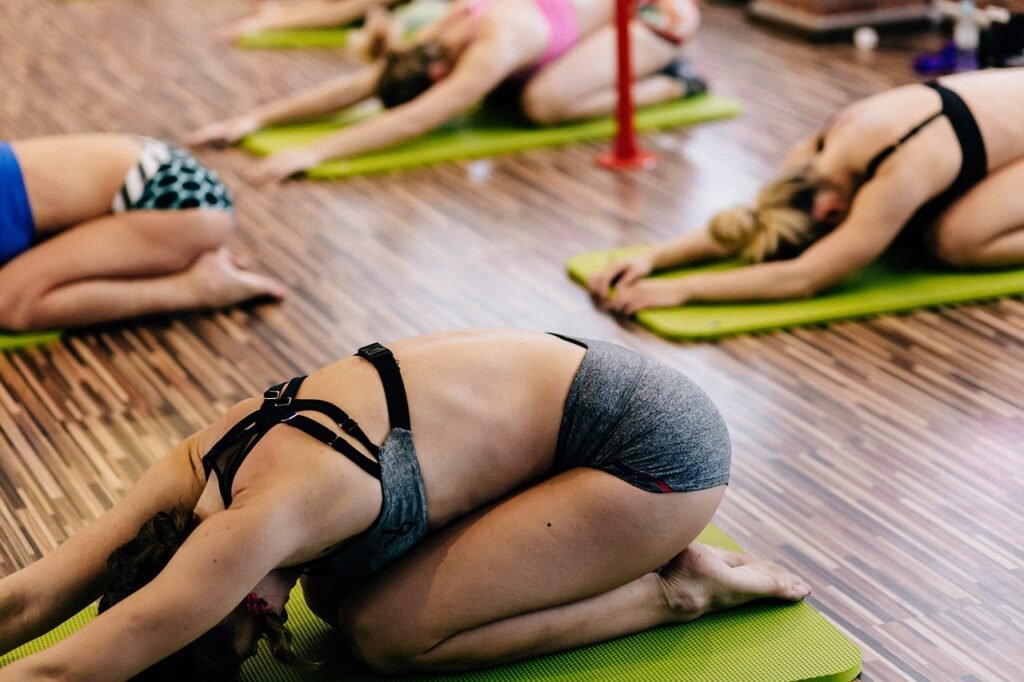
Creating a well-structured yoga schedule can greatly enhance the benefits of your practice.
A 2012 survey revealed that 94% of adults practice yoga primarily for wellness reasons.
To start, consistency is key.
Begin with short, daily sessions to build a habit. Even 10-15 minutes a day can make a significant difference.
As you become more comfortable, gradually increase the duration and intensity of your practice.
Incorporate a variety of yoga poses to ensure a balanced workout.
For instance, mix foundational poses like Mountain Pose and Downward-Facing Dog with more dynamic sequences such as Warrior I and Cat-Cow Pose.
This variety not only targets different muscle groups but also keeps the practice engaging.
Consider dedicating specific days to different aspects of yoga.
For example, you could focus on strength-building poses one day and restorative poses the next.
This approach allows your body to recover while still benefiting from regular practice.
Mindfulness and breathing techniques should also be part of your schedule.
Allocate a few minutes each session for pranayama exercises like Nadi Shodhana or Ujjayi breath.
These techniques help cultivate mental clarity and relaxation, complementing the physical benefits of your asanas.
Finally, be flexible with your schedule.
Life can be unpredictable, and it’s important to adapt rather than skip your practice altogether.
If you miss a session, don’t be discouraged; simply resume the next day.
By designing a yoga schedule that suits your lifestyle and goals, you’ll find it easier to maintain a consistent practice.
This structured approach can help you achieve greater physical, mental, and emotional well-being.
Enhancing Mindfulness and Meditation
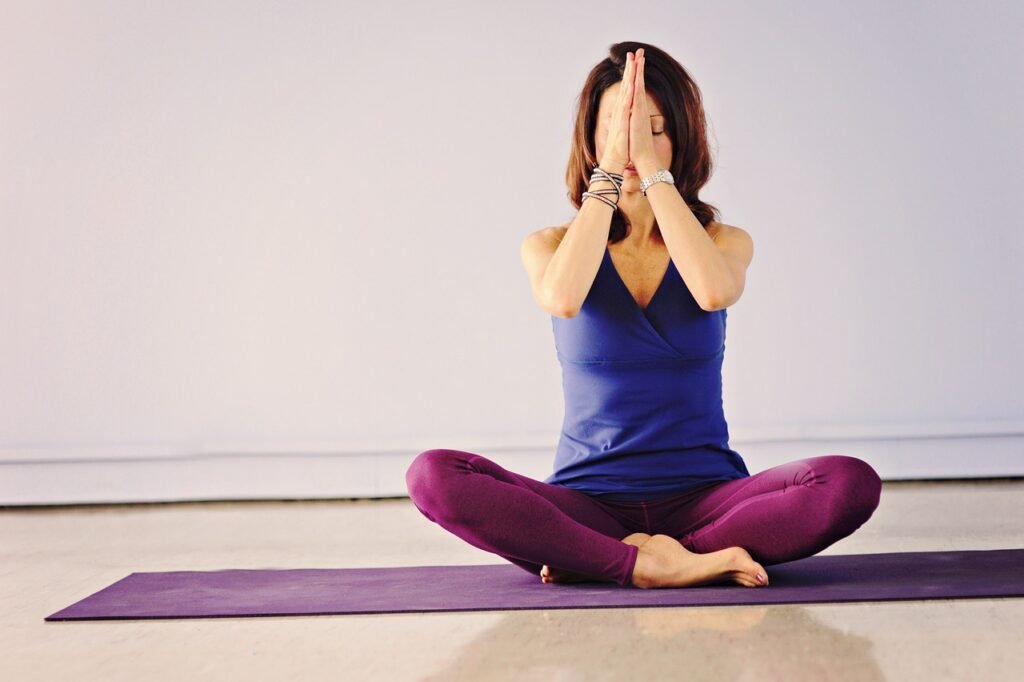
Incorporating mindfulness and meditation into your yoga practice can significantly enhance its benefits.
These elements encourage you to focus on the present moment, fostering a deeper connection between mind and body.
One effective technique to enhance mindfulness is the body scan.
As you move through different poses, take a moment to mentally scan your body from head to toe.
Notice areas of tension or discomfort and use your breath to release them.
Another powerful tool is breath awareness. During your practice, pay close attention to your breathing patterns.
Observe how your breath changes with each movement and how it affects your state of mind. This awareness can deepen your meditation and create a sense of calm and focus.
Incorporating meditation before or after your asana practice can also be beneficial.
Start with a few minutes of seated meditation, focusing on your breath or a simple mantra.
This can help set the tone for your practice or provide a peaceful transition back into daily activities.
Mindfulness extends beyond the mat as well.
Practicing yoga with a mindful attitude encourages you to bring that same awareness into other areas of your life.
Whether it’s eating, walking, or interacting with others, being present can enhance your overall well-being.
By integrating these mindfulness and meditation techniques, you’ll find that yoga becomes more than just a physical exercise.
It transforms into a holistic practice that nurtures both your body and your mind, promoting a sense of inner peace and balance.
Tailoring Yoga to Fit Your Needs
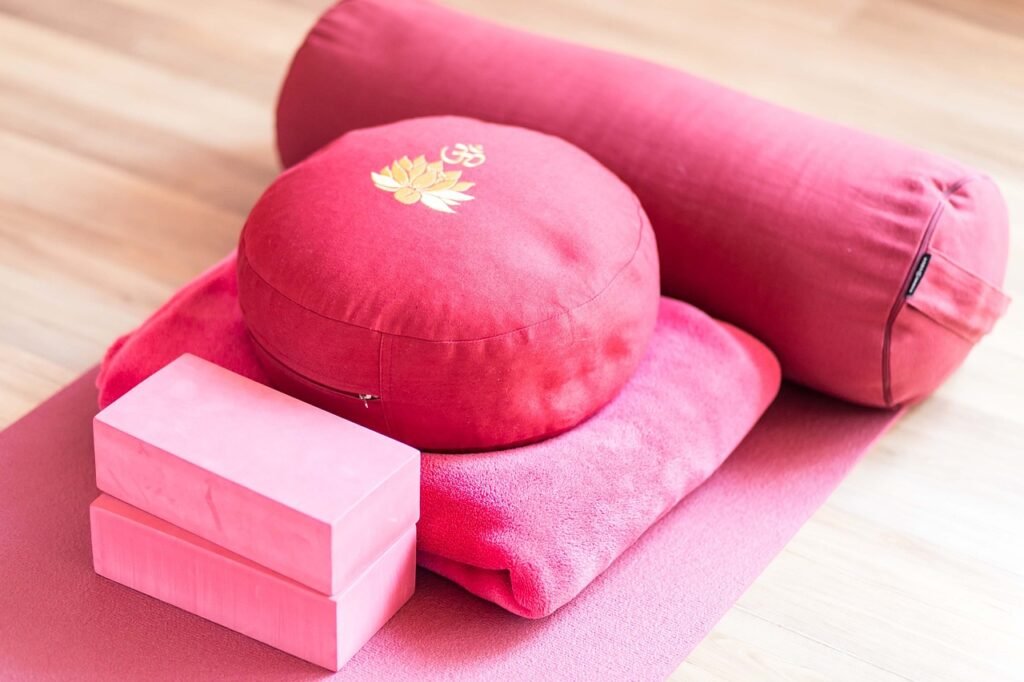
Yoga’s adaptability makes it accessible to everyone, regardless of age, fitness level, or experience.
To ensure that your practice aligns with your unique needs, consider modifying poses with the help of props like blocks, straps, and bolsters.
These tools can provide additional support and help you achieve the correct alignment, making poses more accessible and comfortable.
Listening to your body is crucial.
Each day, your energy levels and physical condition may vary.
Be mindful of how you feel and adjust your practice accordingly.
If you’re experiencing tightness or discomfort, don’t hesitate to modify poses or take a rest in Child’s Pose.
The goal is to practice safely and effectively without pushing yourself to the point of strain or injury.
Incorporating different styles of yoga can also help tailor your practice to your needs.
For example, if you’re looking to build strength and endurance, consider incorporating Vinyasa or Ashtanga yoga into your routine.
For a more restorative experience, try Yin or Restorative yoga, which focuses on deep stretching and relaxation.
Additionally, setting specific goals can help you tailor your practice.
Whether you’re aiming to improve flexibility, enhance posture, or reduce stress, having clear objectives can guide your practice and keep you motivated.
Track your progress by maintaining a yoga journal or taking note of improvements in your physical and mental well-being.
Finally, consider seeking guidance from experienced yoga instructors.
Personalized feedback and adjustments can make a significant difference in your practice.
Many instructors offer modifications for various poses and can suggest alternatives that better suit your abilities and goals.
By embracing yoga’s adaptability and listening to your body’s needs, you can create a practice that is both safe and fulfilling, fostering long-term growth and well-being.
Maintaining Consistency and Measuring Growth

Consistency is the cornerstone of a successful yoga practice.
Establishing a regular routine helps you see tangible progress, whether it’s enhanced flexibility, better posture, or increased strength.
To maintain consistency, start by setting realistic goals and gradually building on them.
Even brief daily sessions can make a significant difference over time.
Measuring your growth can be a powerful motivator.
Keep a yoga journal to track your experiences, noting any physical or mental changes you observe.
This can include improvements in specific poses, increased mindfulness, or a reduction in stress levels.
Photographs or videos of your practice can also serve as visual reminders of your progress, providing a clear before-and-after perspective.
It’s also helpful to revisit poses periodically to assess your development.
For example, you might notice that a pose that once felt challenging now feels more accessible.
Celebrate these milestones, no matter how small, as they reflect your dedication and growth.
Incorporating variety into your practice can also help maintain your interest and engagement.
Mix foundational poses with more advanced sequences or experiment with different styles of yoga.
This variety keeps the practice fresh and targets different muscle groups, contributing to overall growth.
Listening to your body remains essential.
Some days you may feel more energetic and ready for a vigorous session, while other days might call for a gentler approach.
Adapt your practice to align with your current physical and mental state, ensuring you stay committed without risking burnout or injury.
Regular feedback from a yoga instructor can provide valuable insights and adjustments to enhance your practice.
They can offer modifications and corrections that help you achieve better alignment and deeper stretches, furthering your progress.
By staying consistent and actively measuring your growth, you’ll find that your yoga practice becomes a rewarding journey of continual improvement and self-discovery.
Conclusion and Further Encouragement
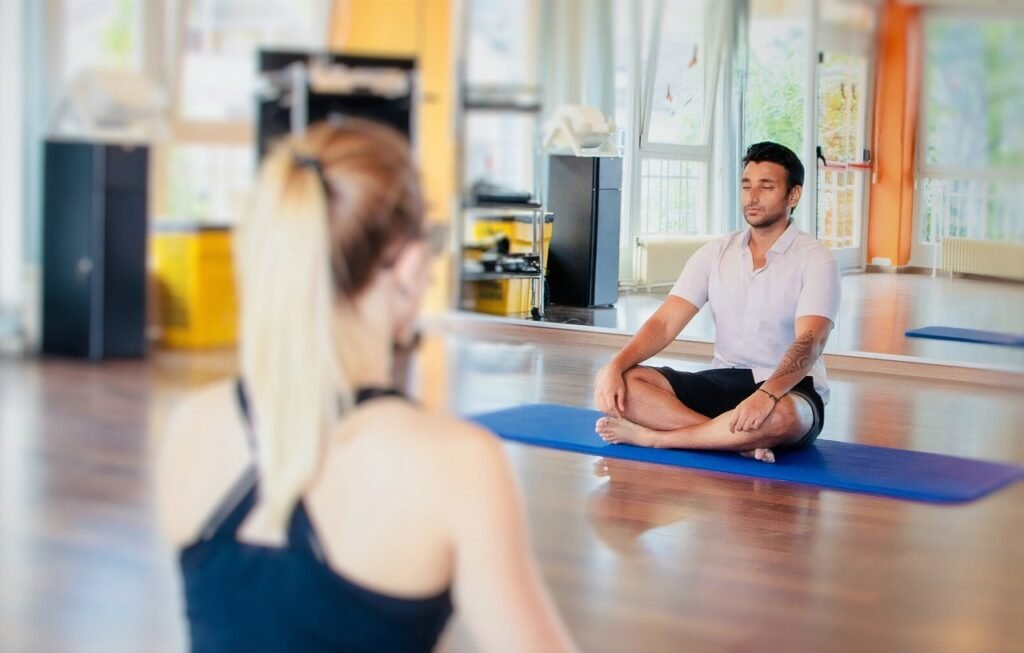
As you continue your yoga practice, remember that progress is not always linear.
Some days may feel more challenging than others, but each session contributes to your overall growth and well-being.
Embrace these fluctuations as part of your journey, and don’t be discouraged by temporary setbacks.
Consistency is key, but flexibility in your routine is also essential.
Adapt your practice to fit your current physical and mental state, ensuring that it remains a source of joy rather than a chore.
Celebrate small milestones and recognize that every effort, no matter how small, brings you closer to your goals.
Seek out additional resources to deepen your understanding of yoga.
Online tutorials, books, and community classes can offer new insights and techniques to enrich your practice.
Engaging with a yoga community, either in-person or virtually, can provide support and motivation, making your journey more enjoyable and fulfilling.
Remember, yoga is a deeply personal practice.
Focus on your individual progress rather than comparing yourself to others.
Listen to your body, honor its limits, and appreciate its capabilities.
This mindful approach will help you cultivate a deeper connection with yourself and enhance the benefits of your practice.
Above all, enjoy the process.
Yoga is not just about achieving physical feats but about fostering a sense of inner peace and balance.
Let your practice be a sanctuary where you can find solace, strength, and self-discovery.
Your dedication and openness to learning will guide you towards a healthier, more harmonious life.
